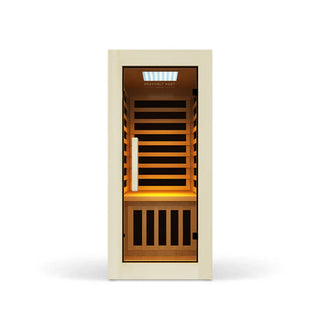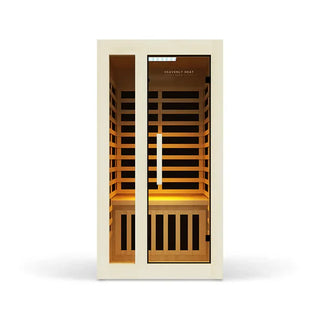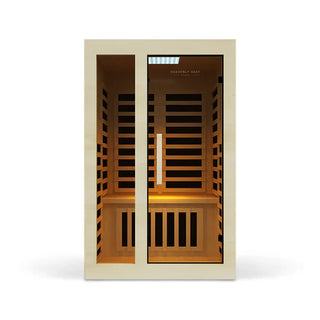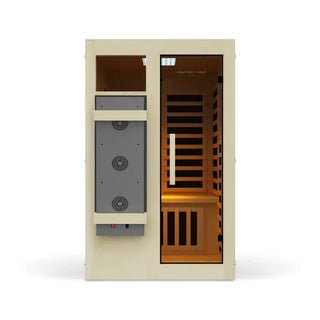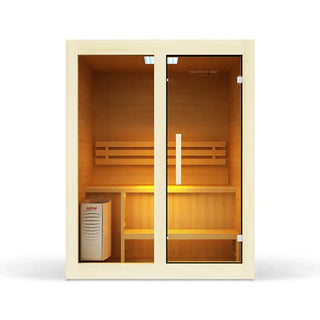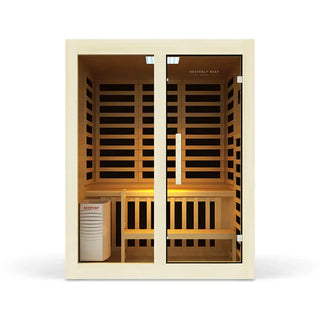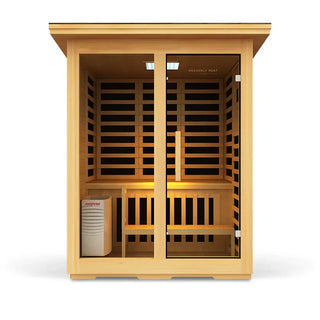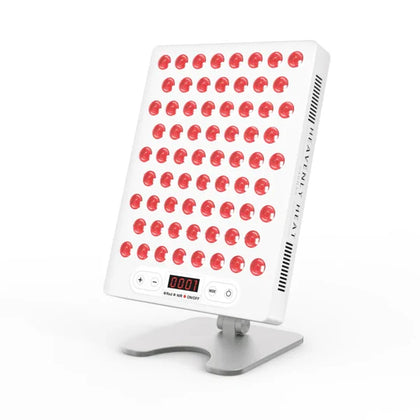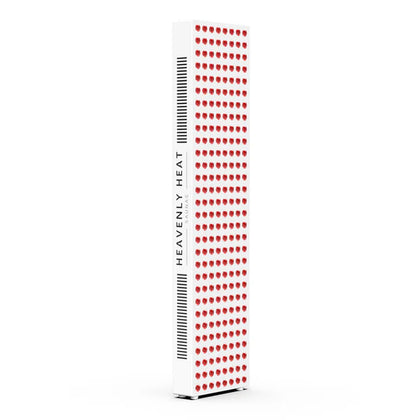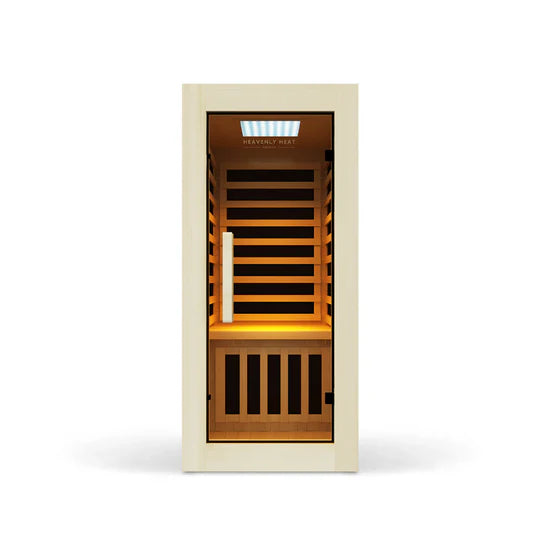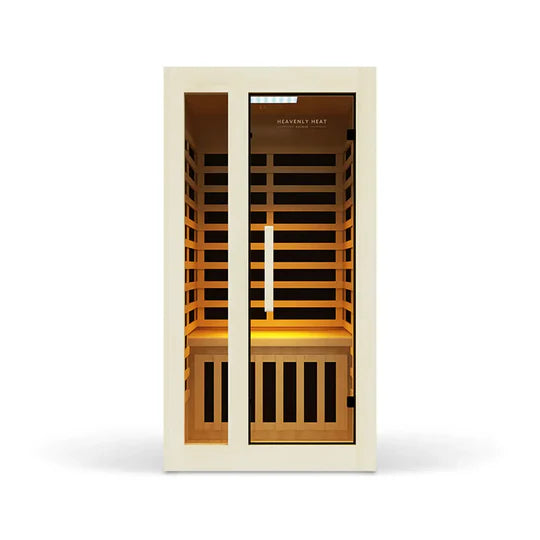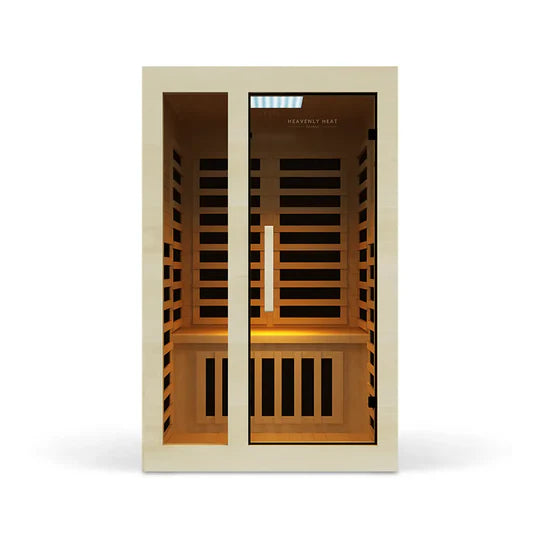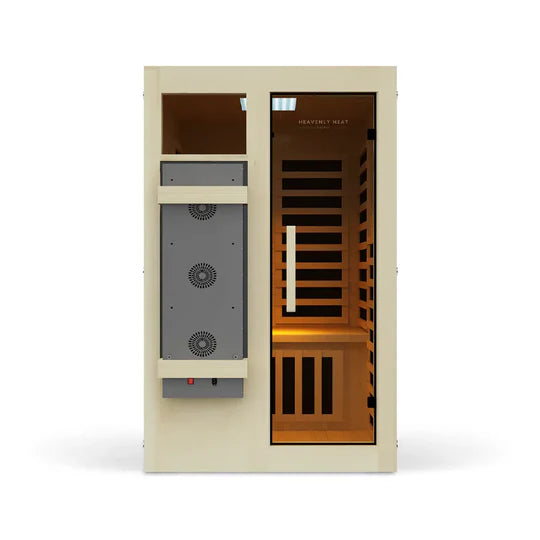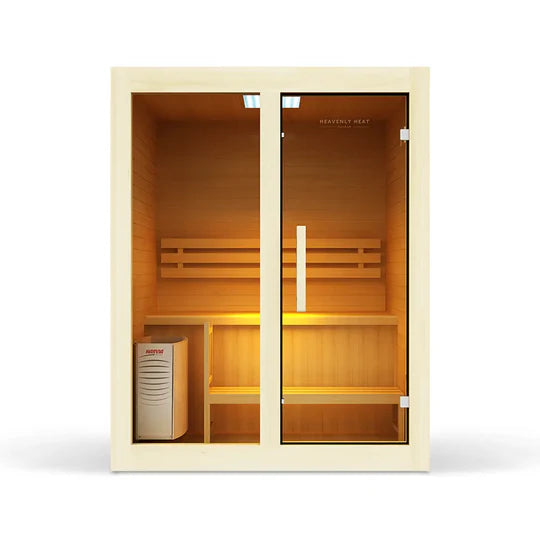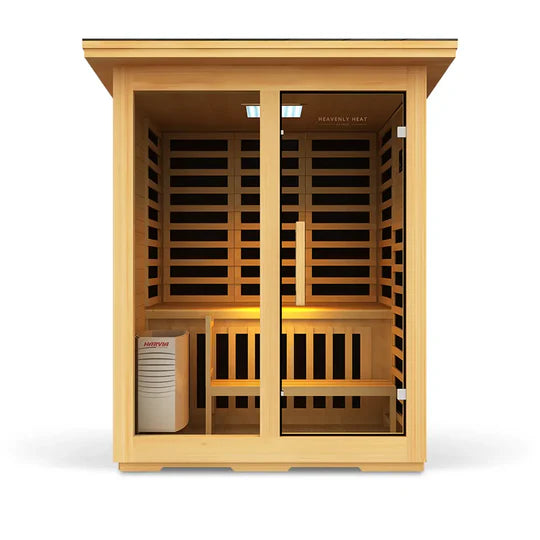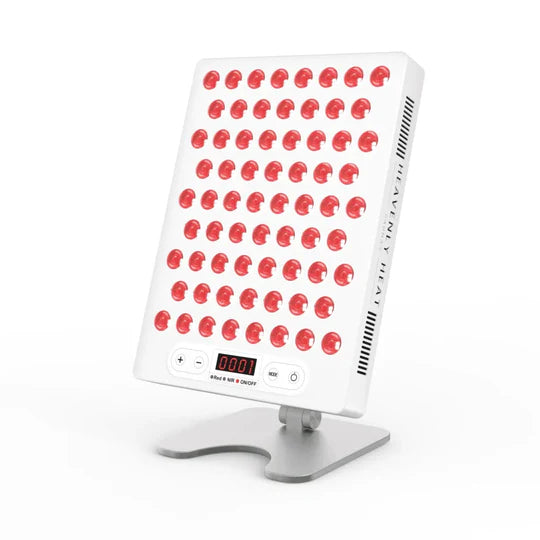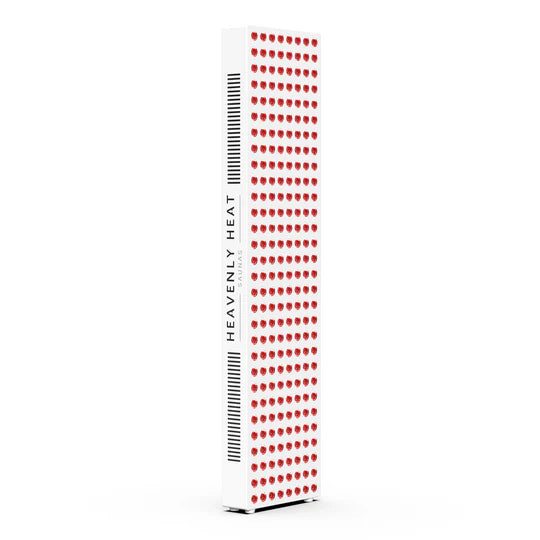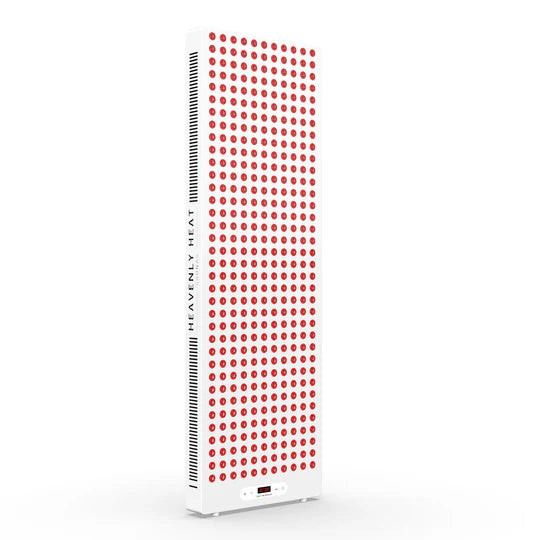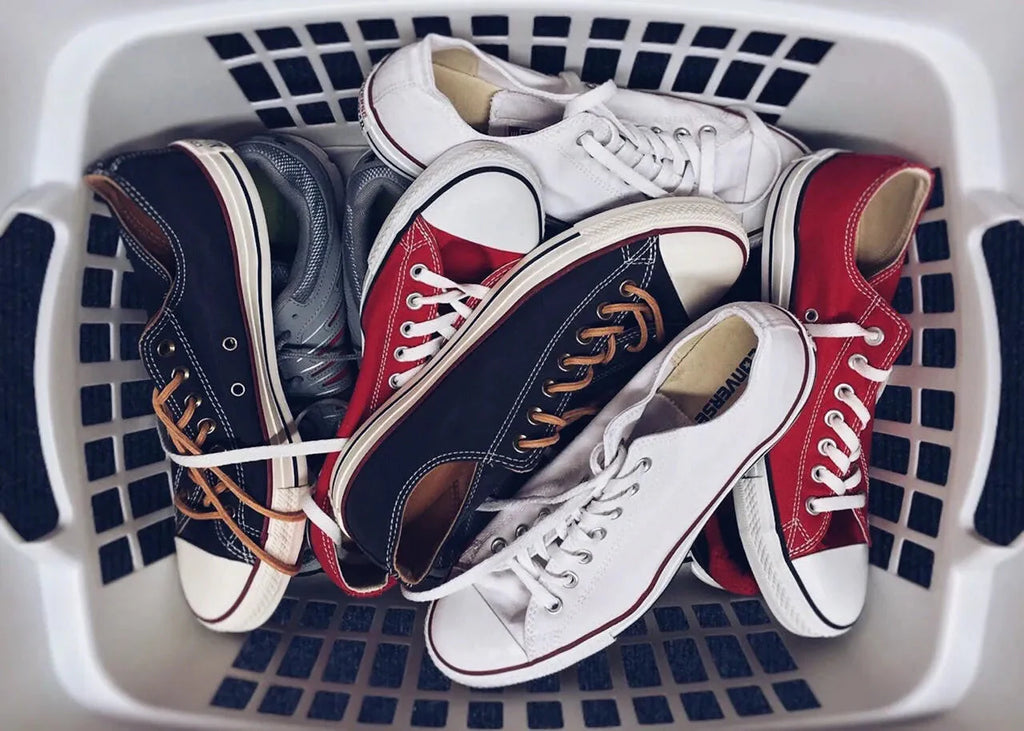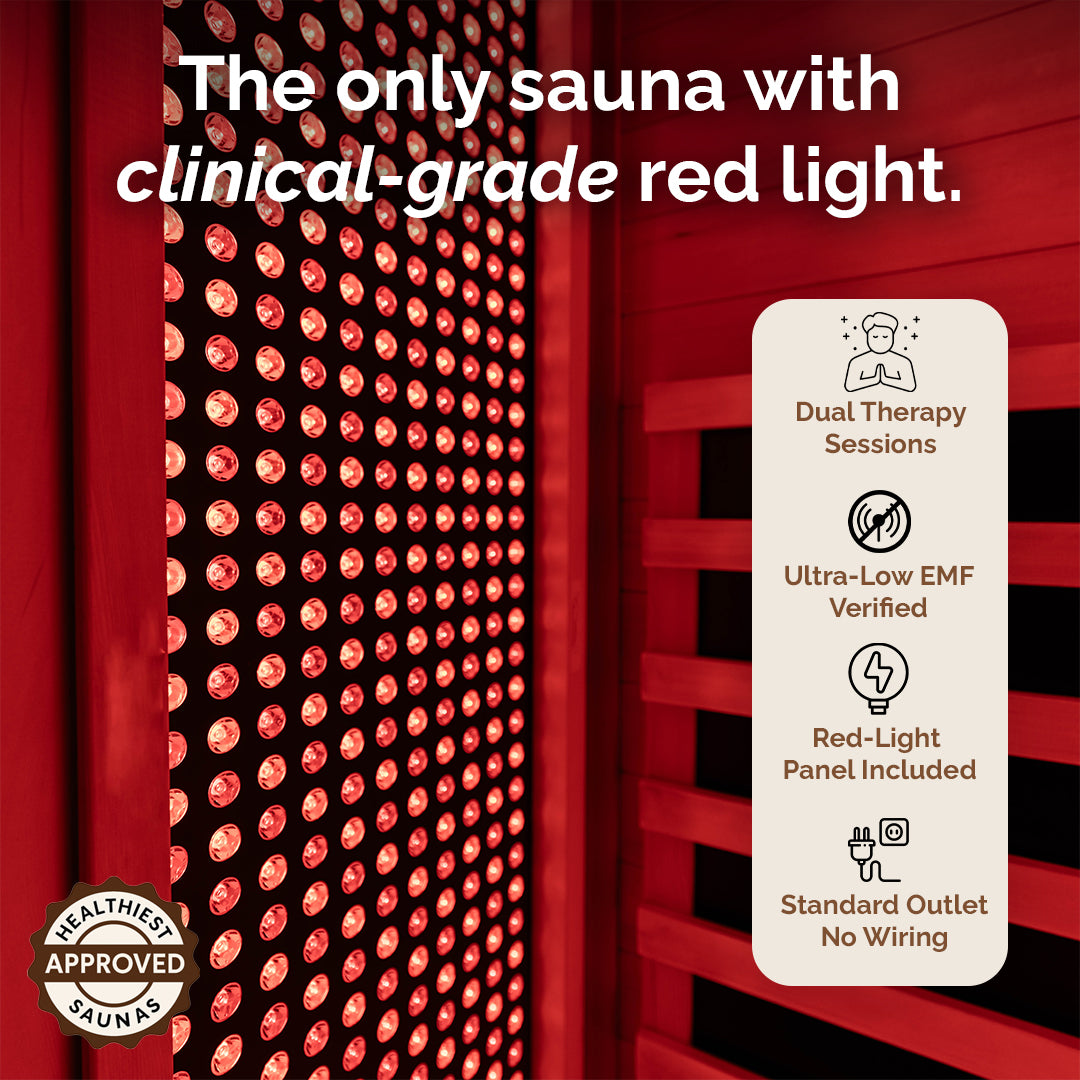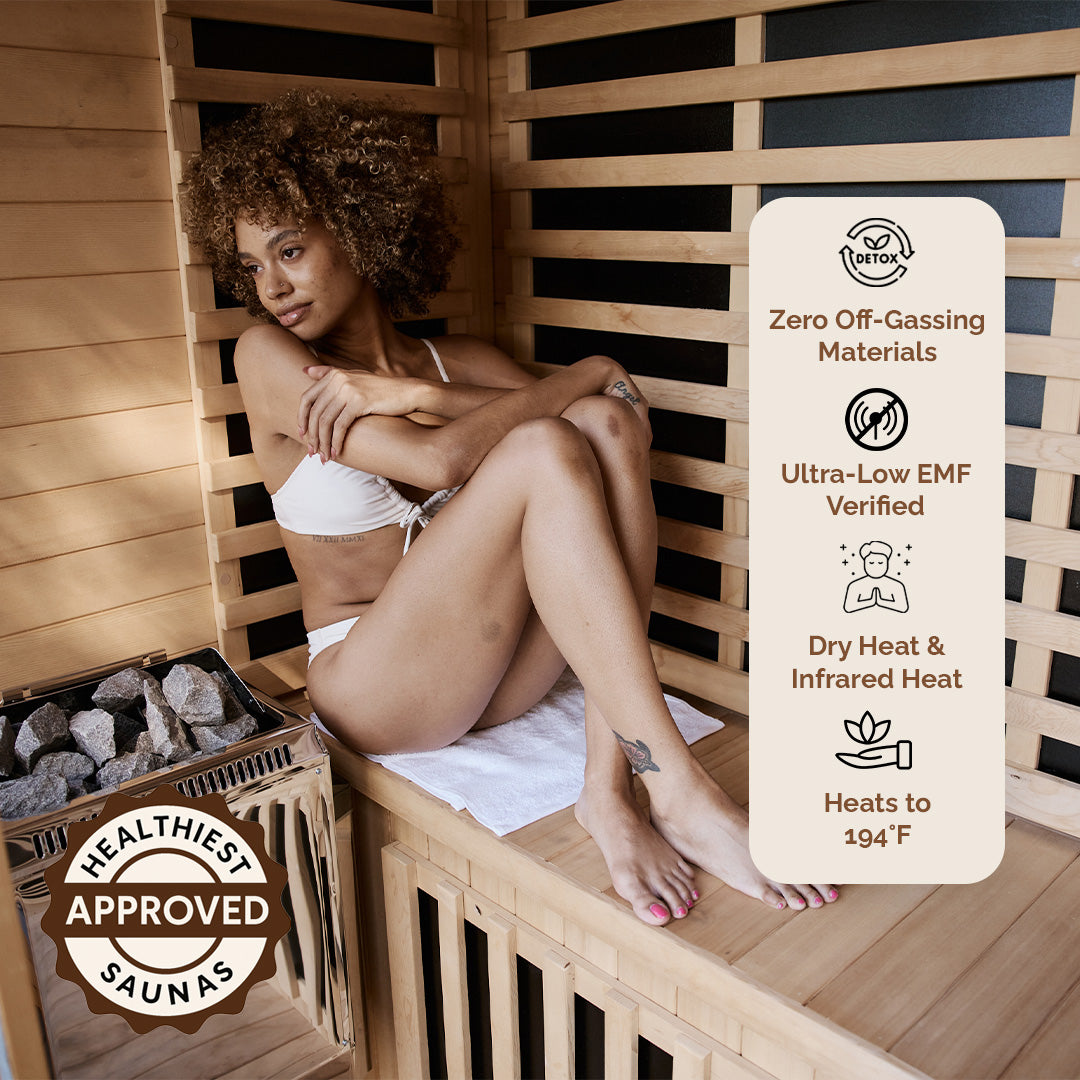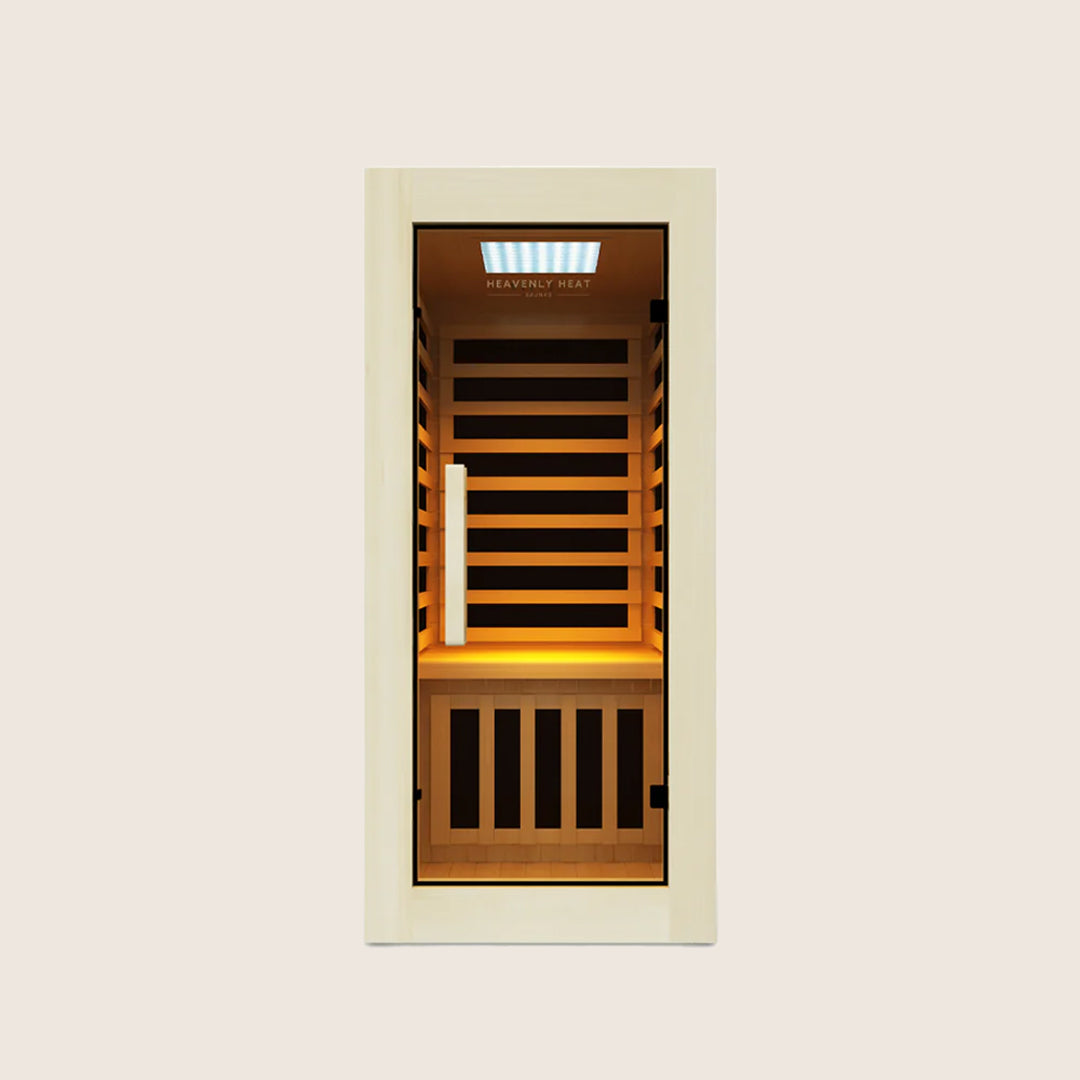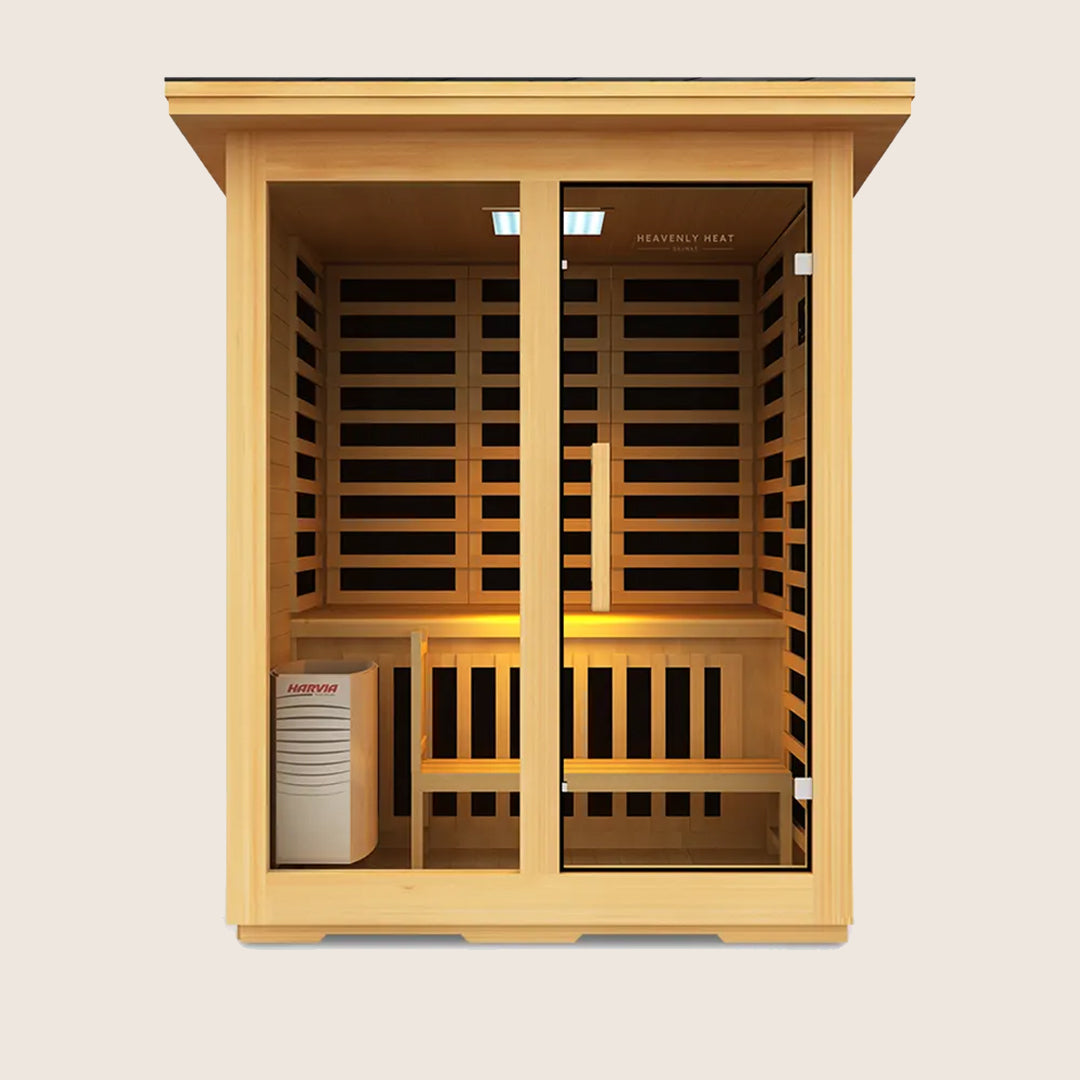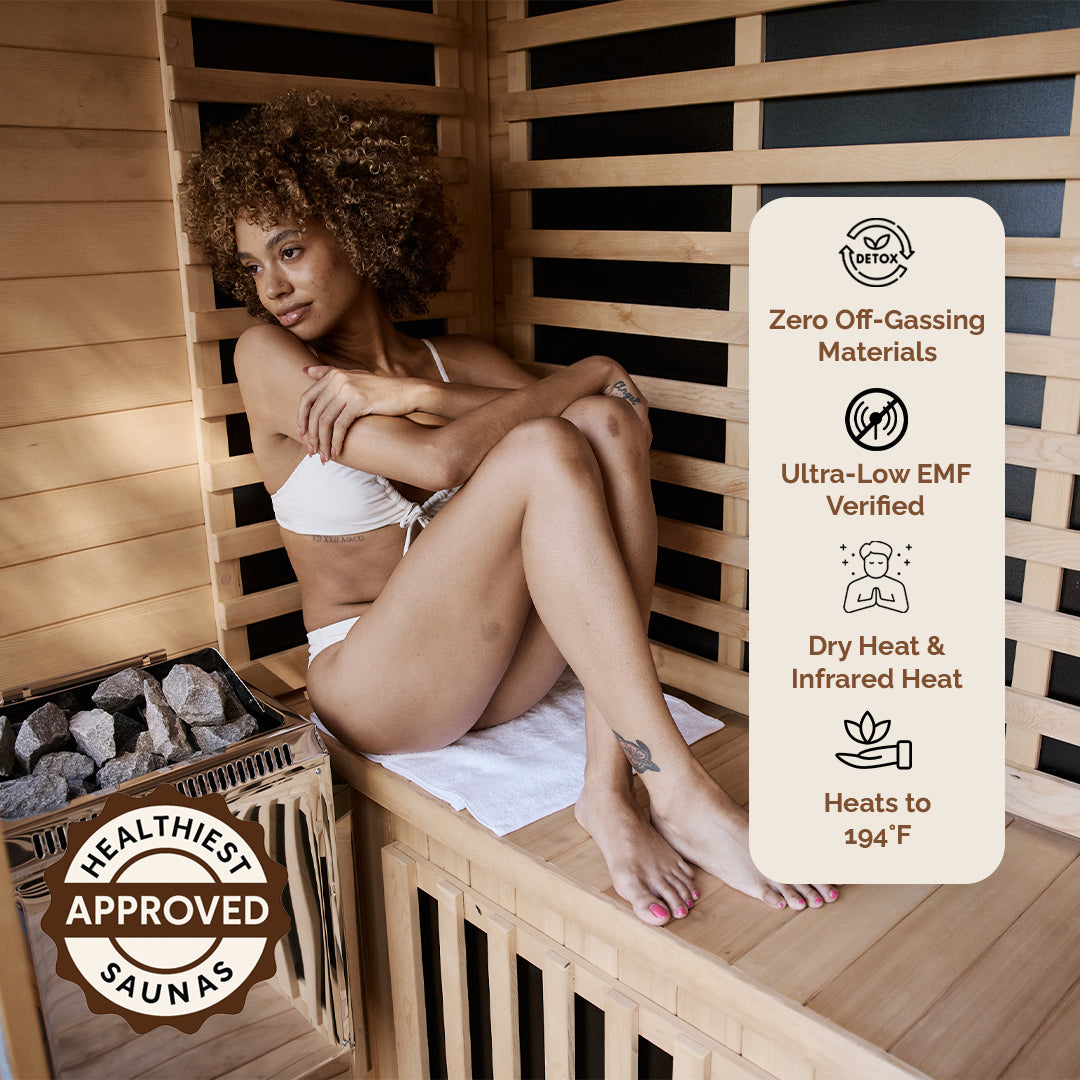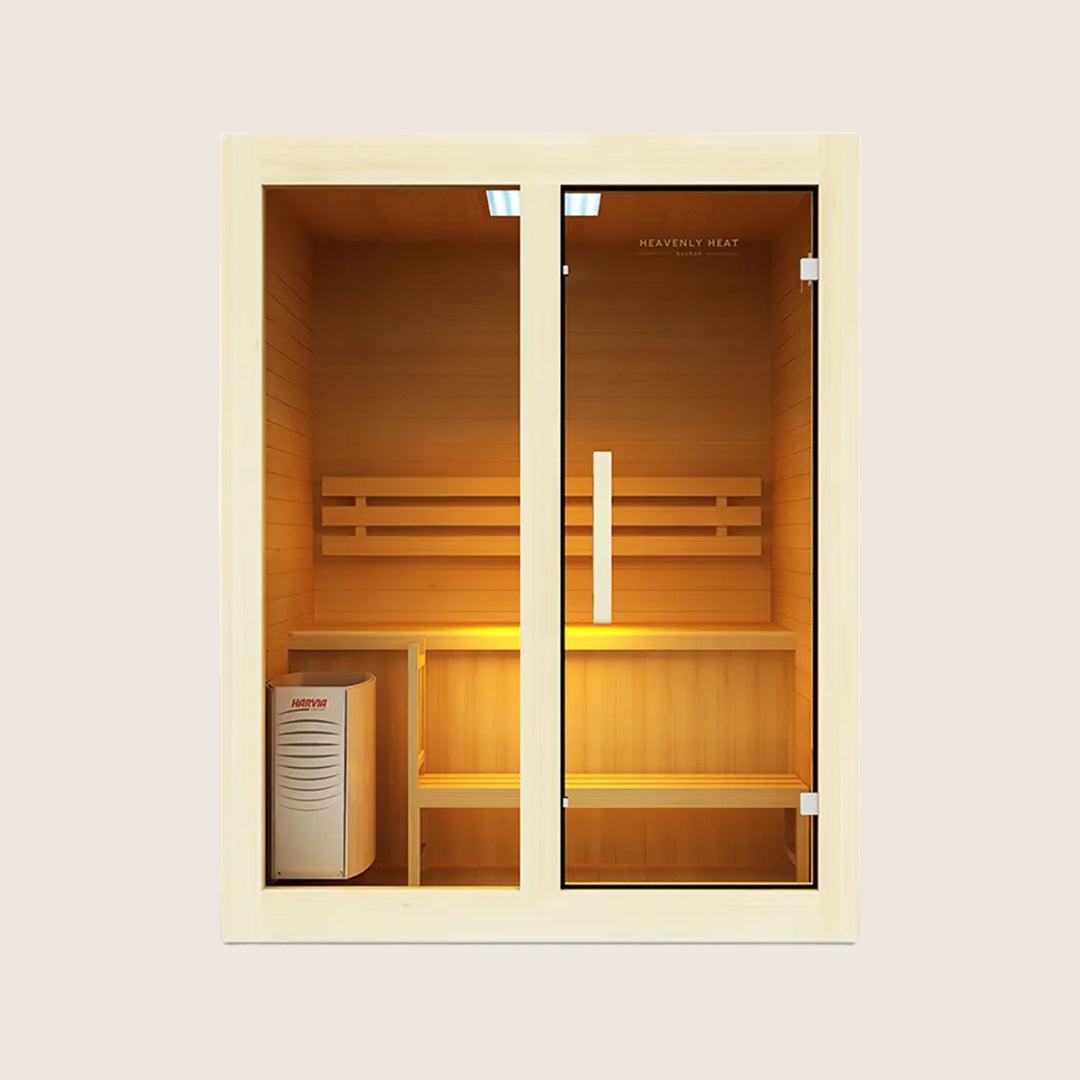Is Sauna Good For Skin?

Saunas have become increasingly popular in recent years as a relaxation method and a way to improve overall well-being.
Not only do they provide a calming and stress-reducing experience, but saunas also offer numerous benefits for the skin.
In this article, we will explore seven ways in which saunas can help improve your skin, discuss any potential drawbacks, and share tips on how to maximize the benefits of a sauna for your skin.
The Science Behind Saunas and Skin Health
Scientific studies indicate that regular sauna use can positively impact skin physiology. A study published , in the Annals of Clinical Research (1988) found that while some individuals with skin sensitivities may experience itchiness due to sweating, sauna bathing generally supports skin health by aiding in the removal of hyperkeratotic scales in psoriasis and enhancing the effectiveness of topical treatments.
The high heat environment also helps eliminate dermatophytes and other microorganisms. In a more recent study (2008) , researchers assessed the effects of regular Finnish sauna bathing on 41 healthy adults and observed improved stratum corneum hydration, a more stable epidermal barrier function, and enhanced recovery of skin pH and transepidermal water loss after heat exposure.
These findings suggest that regular sauna sessions can help maintain healthy skin by supporting its barrier function and hydration balance.
7 Ways sauna to Help improve your Skin
When it comes to achieving a healthy and radiant complexion, there are countless skincare products and treatments available.
However, one natural method that has been gaining popularity is the sauna. Not only does spending time in a sauna offer a multitude of health benefits, but it can also work wonders for your skin. Let’s explore seven ways in which saunas can help improve your skin.
Detoxification
When you sit in a sauna and start sweating, your body pushes out toxins like heavy metals through your skin.
This natural detox helps unclog pores and removes stuff that can make your skin look dull or tired.
The cleaner your skin is from the inside, the healthier and clearer it looks on the outside. A study in Int. J. Environ. Res. Public Health 2022 found that sauna sweat contains harmful metals like lead, arsenic, and nickel. So yes, sweating in a sauna does more than cool you down,it helps your skin shine.
Increased Circulation
Better blood flow means better skin—it’s that simple. When your circulation improves, your skin gets more oxygen and nutrients, which helps it heal faster, glow brighter, and stay healthier.
A sauna boosts this process by heating your body and making your heart pump more blood toward your skin.
According to the National Library of Medicine, sauna use increases skin circulation just like a brisk walk does.
This steady rush of blood brings everything your skin needs to refresh itself. That’s one powerful reason sauna can truly help your skin shine.
Deep Cleansing
When we sweat, our pores open up and release trapped dirt and oil. Regular sauna sessions can aid in unclogging pores, preventing acne breakouts, and leaving your skin looking clear and refreshed. Imagine stepping out of the sauna with pores that are free from impurities, allowing your skin to breathe and thrive.
Exfoliation
The heat and humidity in a sauna help to soften the outer layer of dead skin cells, making it easier to slough them off.
This natural exfoliation process reveals smoother, more radiant skin underneath. As you sweat away, your skin undergoes a gentle exfoliation, leaving it feeling silky smooth and ready to absorb the benefits of your skincare routine.
Hydration
While sweating can lead to temporary water loss, saunas can also improve the skin’s ability to retain moisture.
The steam in a sauna helps to hydrate the skin, leaving it feeling softer and more supple. As you relax in the warm and humid environment, your skin absorbs the moisture, replenishing its natural hydration levels and restoring its natural glow.
Reduction of Inflammation
When inflammation calms down, your skin gets a real chance to heal. It looks less red, feels less irritated, and breaks out less often.
This matters if you deal with acne, eczema, or just want a smoother, healthier glow. One study followed over 2,000 men and found that those who used the sauna more often had much lower levels of C-reactive protein—a major sign of inflammation in the body.
Another study showed that even a short Finnish sauna session helped boost the body’s natural anti-inflammatory response, which is great news for your skin.
Stress Reduction
Stress can really mess with your skin. It triggers breakouts, makes your face look dull, and can even speed up aging.
When you’re stressed, your body releases hormones that cause inflammation and hurt your skin’s natural glow.
That’s where the sauna comes in. One study on women showed that sitting in a sauna at 80°C for just 20 minutes lowered stress, tension, anger, and fatigue,and boosted their mood.
Another study found most people use saunas to relax, and many noticed better sleep and mental well-being. Less stress means calmer, clearer, and healthier-looking skin.
Other Therapies that help with Skin
Red Light Therapy (Photobiomodulation)
Red light therapy, also known as photobiomodulation, is gaining attention for its remarkable benefits on skin health.
According to * Skin Research and Technology 2023*, using an LED mask emitting red light at 630 nm twice a week for three months led to visible improvements in skin quality.
The therapy boosts cellular energy (ATP), reduces oxidative stress, and promotes collagen production. Participants saw:
* Fewer wrinkles
* Firmer, more elastic skin
* Smaller pores
* Smoother, clearer complexion
These results lasted even a month after treatment, proving its long-term rejuvenating power.
Cold Therapy (Cryotherapy or Ice Facials)
Cold therapy, like cryotherapy or simple ice facials, gives your skin a refreshing wake-up call. When cold touches your skin, it tightens blood vessels.
Once the skin warms up again, blood flow increases, which brings more oxygen and nutrients to the surface.
This helps calm redness, reduce puffiness, and makes your skin look tighter and brighter. One study found that 91% of people who tried focused cold therapy saw smoother forehead wrinkles within a month.
Another review showed cold therapy also helps with inflammation, itching, and even skin tone, making it a simple but powerful skin booster.
Potential Drawbacks
Dehydration Risk
Extended exposure to high heat in saunas can lead to dehydration. It’s crucial to stay hydrated by drinking water before, during, and after sauna sessions.
Overheating Concerns
Spending too much time in a sauna raises body temperature, leading to symptoms like dizziness and nausea. Sauna sessions should be limited to 15-20 minutes to avoid overheating.
Cardiovascular Caution
Individuals with cardiovascular issues should be cautious, as sauna heat can strain the heart. Consulting a doctor before sauna use is advisable for those with heart conditions.
How to Maximize the Benefits of a Sauna for Your Skin
To get the most out of your sauna sessions and optimize the benefits for your skin, consider the following tips:
- Keep sessions short: Limit each sauna session to 10-15 minutes to avoid dehydration and overheating.
- Cleanse before and after: Before entering the sauna, cleanse your skin thoroughly to remove any makeup, dirt, or impurities. Afterward, rinse with lukewarm water and moisturize.
- Stay hydrated: Drink plenty of water before, during, and after your sauna session to replenish lost fluids.
- Protect your hair: Consider wearing a shower cap or tying your hair up to prevent damage from the heat and sweat.
- Gradually increase temperature: Start with a lower temperature and gradually increase it over time to allow your body to acclimate to the heat.
What’s better for the skin sauna or steam?
Both saunas and steam rooms have their unique benefits for the skin. While saunas offer dry heat, steam rooms are humid environments with moist heat.
The choice between the two ultimately depends on personal preference and individual needs. Some people may find that the dry heat of a sauna is more comfortable, while others may enjoy the steamy ambiance of a steam room.
Experimenting with both options and observing how your skin responds can help you determine which one works best for you.
One of the key benefits of saunas for the skin is their ability to promote sweating, which can help to flush out toxins from the body and unclog pores.
The dry heat in saunas can also improve blood circulation, which in turn can promote a healthy glow in the skin.
Additionally, saunas are known to help relax muscles and reduce stress levels, which can indirectly benefit the skin by preventing stress-related breakouts.
On the other hand, steam rooms are praised for their ability to hydrate the skin and promote moisture retention.
The humid environment in steam rooms can help to open up the pores and facilitate deep cleansing, making it a great option for those with congested or acne-prone skin.
The steam can also help to soothe respiratory issues and promote relaxation, which can have a positive impact on overall skin health.
Why is my skin red after the sauna?
If your skin turns red after a sauna, it’s normal. Sauna heat expands blood vessels, causing temporary redness.
This fades quickly. Prolonged redness or irritation needs medical advice. The redness is due to increased blood circulation from sauna heat.
High temperatures make your heart rate rise, and blood vessels dilate to regulate body temperature.
This increased blood flow can lead to redness, especially where vessels are close to the surface. Sauna heat triggers the release of endorphins, natural feel-good chemicals. These help you relax and give your skin a healthy glow, promoting rejuvenation.
Conclusion
In conclusion, saunas can be highly beneficial for your skin. They promote detoxification, improve circulation, cleanse the skin, exfoliate, hydrate, reduce inflammation, and help manage stress.
However, it is essential to be cautious and take necessary precautions to ensure a safe and enjoyable sauna experience.
With proper care and consideration, incorporating regular sauna sessions into your skincare routine can lead to a healthier and more radiant complexion.


